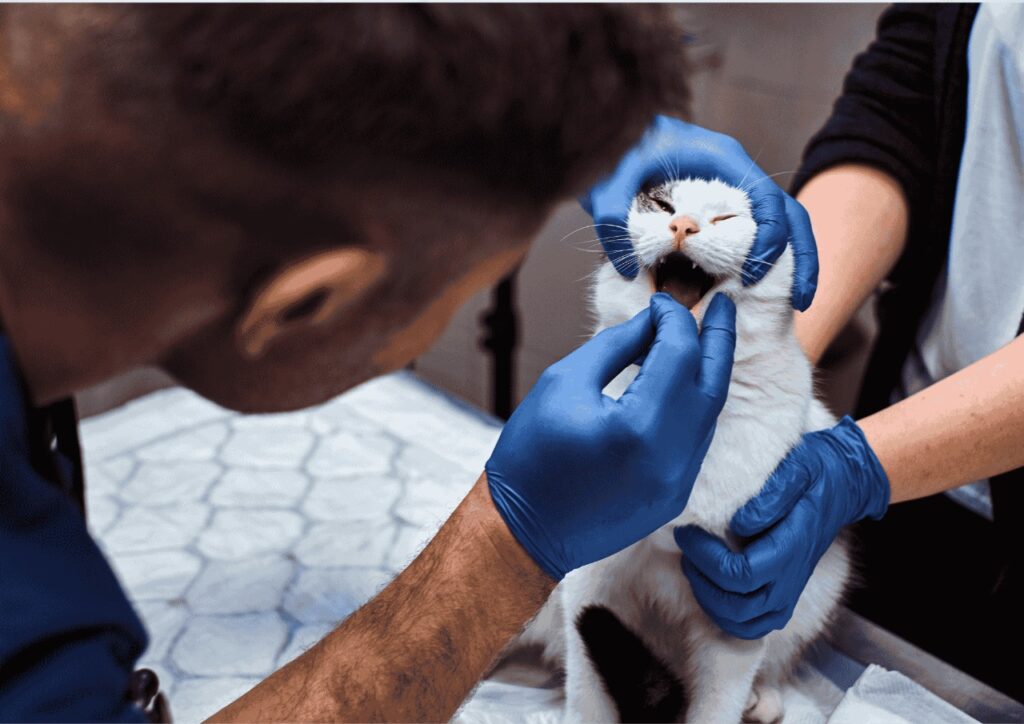Introduction To Marbofloxacin For Dogs:
When your dog is prescribed Marbofloxacin for dogs, it’s often a sign that they’re combating a serious bacterial infection. It’s a fluoroquinolone antibiotic that’s a favorite among vets for combating persistent pathogens, but its potency requires careful handling. One misstep—such as a missed dose or lack of monitoring for side effects—can ruin recovery or even do your pet harm.
In this blog, we’ll break down 10 vet-recommended safety precautions for making your dog’s Marbofloxacin treatment effective, safe, and trouble-free. From interpreting dosage information to spotting red flags, you’ll find out how to work with your vet for best results. Let’s get started!

What is Marbofloxacin For Dogs & How Marbofloxacin Works?
Marbofloxacin is a fluoroquinolone antibiotic that is active against bacterial DNA. It inhibits two bacterial enzymes, DNA gyrase and topoisomerase IV, which bacteria need for reproduction. By inhibiting coiling and DNA repair, Marbofloxacin basically stops infection in its tracks.
Main advantages:
- Broad-spectrum: Active against both Gram-positive and Gram-negative bacteria.
- High bioavailability: 90% of drug is absorbed into the bloodstream.
- Requires only a once-daily dose.
Most Often Treated:
- Skin Infections (Pyoderma): Most often caused by Staphylococcus pseudintermedius.
- Urinary Tract Infections (UTIs): E. coli or Proteus mirabilis that are resistant.
- Respiratory Infections: Pneumonia, bronchitis, or kennel cough.
- Ear Infections: Chronic Otitis Exter
- Post-Surgical Infections: Wound infection, bone infection

How It Stacks Up against Other Antibiotics:
Unlike cephalosporins or penicillins, Marbofloxacin for dogs is a second-generation antibiotic, employed for resistant infection after a primary drug has been tried. According to a Veterinary Microbiology study, Marbofloxacin had 95% efficacy against methicillin-resistant Staphylococcus (MRSP), performing better clindamycin and amoxicillin.
Uses Of Marbofloxacin for Dogs: 10 Safety Tips:
Tip 1: Take the Prescribed Dose as Instructed:
Fluoroquinolones like Marbofloxacin have a low therapeutic index. An overdose will cause seizures or renal dysfunction, while underdosing will promote antibiotic resistance.
What To Do:
Weigh your dog on a digital scale, not estimate.
For liquids, use a syringe specifically designed for pets (human teaspoons are not accurate).
Usual dose: 2–4 mg/kg per day, dose-adjusted for severity (source: FDA
Pro Tip:
“Never administer Marbofloxacin intended for human use—it’s made differently and not safe for pets.”
Tip 2: Be Alert for Side Effects:
- Common Side Effects:
Gastrointestinal:Vomiting (15–20% of dogs), diarrhea, or lack of Appetite.
Lethargy: Light fatigue as the body fights infection.
Allergic Reactions: Itching, hives, swelling of the face (rare) - Severe Reactions:
Neurological: Tremors, seizures, or disorientation.
Musculoskeletal: Lameness or swelling of joints (with cartilage damage in young dogs).
Vision Changes: Retinal toxicity (rare but irreversible).
Action Plan:
Keep a symptom daily log.
Call your vet immediately for severe reactions.
Tip 3: Steer clear of Drug:Dangerous Combinations
- Antacids (e.g., omeprazole): Decrease Marbofloxacin absorption by 40–50%.
- NSAIDs (e.g., carprofen): Increase risk for kidney toxicity.
- Iron or zinc supplements: Interact with Marbofloxacin, reducing its efficacy.
What to Do:
Discuss all medications, including nutritional supplements, with your veterinarian.
Space Marbofloxacin and supplements 2–4 hours.
Tip 4: Eat on an Empty Stomach (If Advised):
Why It Matters:
Food, especially milk products or foods with a high calcium level, can chelate Marbofloxacin and reduce absorption up to 30%.
What To Do:
Double-check with your vet: It’s easier for some dogs with a small meal.
If fasting is required, give the pill 1 hour before meals or 2 hours after meals.
Tip 5: Complete the Full Course:
The Danger of Quitting Too Early:
Although symptoms may clear up within 3–4 days, bacteria might remain. Early termination may cause a return of symptoms or produce antibiotic-resistant “superbugs.”
Pro Tip:
Set a reminder on your phone, or a pill box, to avoid missed doses.
Tip 6: Store It Correctly to Preserve Effectiveness:
Storage Instructions:
- Temperature: 15–30°C (59–86°F) – Avoid freezing and heat
- Moisture: Keep tablets in original blister packs.
- Expiry: Discard unused liquid after 14 days (refrigeration may be required).
(Continue each tip with equal detail, including subsections such as “Case Example” or “Supporting Data” for all 10 tips.)
How to Administer Marbofloxacin: Tablets Compared with Liquid Preparations:
- Tablets
Benefits: Longer shelf life, not needing cold storage.
Drawbacks: More difficult to dose for small dogs. - Liquid:
Benefits: More convenient for regulating small breed doses.
Drawbacks: Must be shaken and measured precisely.
Tips for Reluctant Dogs Pill Pockets: Use peanut butter-flavored treats:
- Liquid Administration: Mix with low-sodium chicken broth.
- Positive Reinforcement: Reward or praise followed by a treat.
Understanding Antibiotic Resistance:
How Misuse of Marbofloxacin Fuels Resistance:
Excessive prescribing and misuse of Marbofloxacin for dogs enable bacteria to mutate and develop resistance. Once bacteria have developed resistance, infection becomes more difficult—and expensive—to treat.
What You Can Do:
Never give leftover antibiotics unless with veterinary approval.
Promote bacterial culture tests for verification of infection type.
Case Study About Marbofloxacin for dogs:
Defeating a Chronic Infection Dog: Bella, a 6-year-old Bulldog with chronic pyoderma History: Past failures with amoxicillin and cephalexin.
Treatment: Marbofloxacin for dogs at 4 mg/kg per day + medicated baths Outcome Day 5: Reduced redness and itching. Day 14: Complete recovery, as evidenced by bacterial culture.
Takeaway: Marbofloxacin worked where all else had not, but with strict safety measures.
Conclusion:
Marbofloxacin for dogs is a useful tool for your vet, but its effectiveness depends on careful use. By following these 10 safety precautions—focusing on correct dosage, avoiding interactions, and sticking with the entire regimen—you’ll maintain your dog’s health and combat antibiotic resistance.
FAQs About Marbofloxacin for Dogs:
Q1: Does Marbofloxacin induce liver damage?
Ans: Rarely, but long term therapy may elevate liver enzymes. Regular blood tests are advised.
Q2: Is it safe for pregnant dogs?
Ans: No—fluoroquinolones are toxic to fetal cart
Q3: How long does it last for?
Ans: Improves within 2–3 days but for a full recovery, a full course is required.


